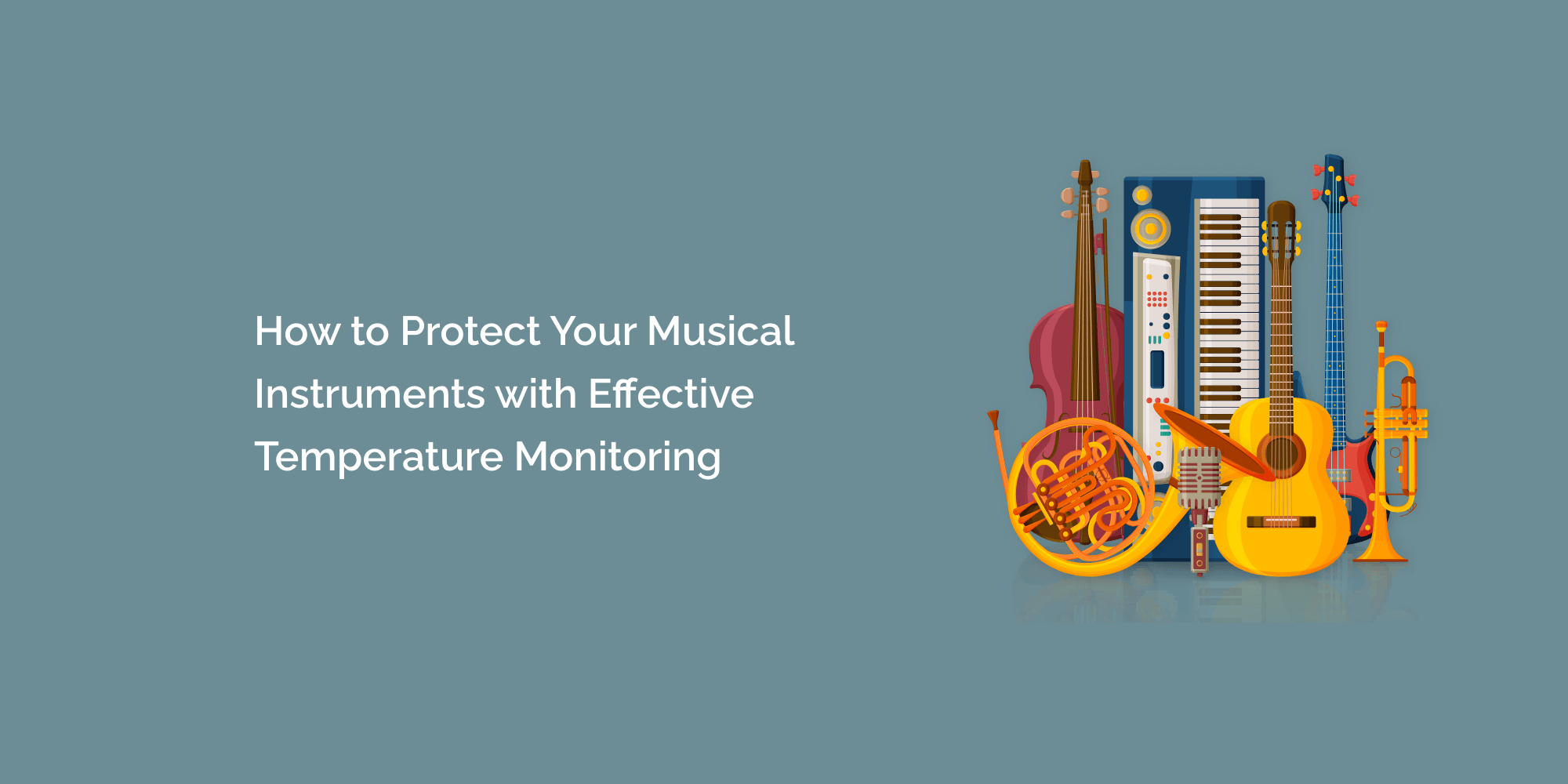Musical instruments are precious possessions and delicate tools that require proper care and maintenance. Temperature fluctuations can significantly impact the condition and performance of your instruments. In this detailed blog, we will explore the importance of temperature monitoring and provide practical tips on protecting your musical instruments. From understanding the effects of temperature on different instrument types to implementing effective temperature monitoring techniques, this guide will help you safeguard your beloved instruments and ensure their longevity.
The Impact of Temperature on Musical Instruments
Temperature significantly impacts musical instruments due to the materials used in their construction. High temperatures can cause wood to expand, leading to warping, cracks, or glue failure. Metal parts may become sluggish or stuck when exposed to extreme heat. On the other hand, low temperatures can cause materials to contract, resulting in structural damage or changes in pitch and tone. Understanding these effects is crucial for taking proactive measures to protect your instruments.
Optimal Temperature Ranges for Musical Instruments
Each type of musical instrument has an optimal temperature range for optimal performance and longevity. Woodwind instruments like flutes and clarinets typically require temperatures between 18-25°C (64-77°F). Brass instruments, including trumpets and trombones, can tolerate slightly higher temperatures, ranging from 18-30°C (64-86°F). String instruments like violins and cellos prefer a more relaxed temperature range of 15-22°C (59-72°F). Percussion instruments, like drums and xylophones, can generally withstand a broader range of temperatures but should still be kept within a comfortable room temperature range.
The Importance of Temperature Monitoring
Temperature monitoring plays a vital role in protecting musical instruments. By monitoring and maintaining optimal temperature conditions, you can preserve your devices' structural integrity, sound quality, and overall lifespan. Monitoring temperature helps identify any fluctuations that could damage the instruments, allowing you to take immediate corrective action.
Effective Temperature Monitoring Techniques
Choosing the proper monitoring tools is essential to monitor the temperature of your musical instruments effectively. Options include traditional thermometers, digital hygrometers, data loggers, and wireless monitoring systems. Place temperature sensors strategically in the storage area and inside instrument cases to obtain accurate readings. Monitoring the room temperature and tracking changes over time will help you identify potential issues.
Creating a Suitable Storage Environment
Proper storage is crucial for protecting your instruments from temperature fluctuations. Controlling humidity levels is essential, as high humidity can cause wood to swell, and low humidity can lead to drying and cracking. Avoid rapid temperature fluctuations by keeping instruments away from drafts or sudden temperature changes. Utilizing climate-controlled spaces, such as instrument lockers or dedicated rooms, ensures a stable environment for long-term storage.
Travel Considerations and Temperature Monitoring
Extra precautions are necessary when traveling with musical instruments to protect them from temperature variations. If possible, carry instruments as hand luggage during air travel to prevent exposure to extreme temperatures in cargo holds. Proper insulation and protective cases can help minimize the impact of temperature fluctuations during road trips. Instruments should never be exposed to direct sunlight or left in freezing conditions for extended periods.
Regular Maintenance and Care
Regular maintenance and care are essential for instrument longevity. Conduct regular inspections to identify any signs of damage or wear. Clean and condition instruments following the manufacturer's guidelines to remove dirt, oils, and moisture that can affect their performance. Seek professional repairs and adjustments for complex issues to ensure the instruments are in optimal condition.
Educating Yourself and Others
Sharing knowledge about temperature monitoring and instrument care is crucial for the musical community. Encourage discussions and information sharing among musicians, teachers, and instrument enthusiasts. By raising awareness about the importance of temperature monitoring, you can help others protect their instruments and preserve the integrity of the musical instruments community.
Certainly! Here are some frequently asked questions (FAQs) regarding protecting musical instruments with effective temperature monitoring:
Why is temperature monitoring necessary for musical instruments?
Temperature monitoring is crucial because temperature fluctuations can cause damage to musical instruments. By effectively monitoring and controlling the temperature, you can preserve the integrity and longevity of your devices.
What are the effects of temperature on musical instruments?
High temperatures can cause materials to expand, leading to warping, cracks, or glue failure. Low temperatures, however, can cause materials to contract, resulting in structural damage or changes in pitch and tone.
How does temperature monitoring protect musical instruments?
Temperature monitoring allows you to identify and address temperature fluctuations promptly. Maintaining optimal temperature conditions can prevent damage to your instruments and ensure their continued performance.
Conclusion
Temperature monitoring is a vital aspect of instrument care and protection. By understanding the impact of temperature on musical instruments and implementing effective monitoring techniques, you can safeguard your instruments from damage, maintain their quality, and extend their lifespan. Creating suitable storage environments, taking precautions during travel, and conducting regular maintenance is essential for every musician. Educating yourself and others contributes to preserving musical instruments and the art of music. Remember, your instruments are not just objects but expressions of creativity and beauty. Treat them with care, and they will continue to bring joy to performers and listeners for years.








